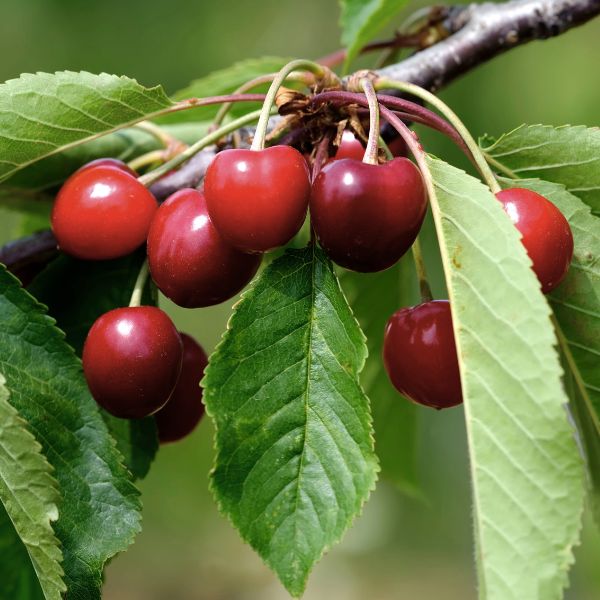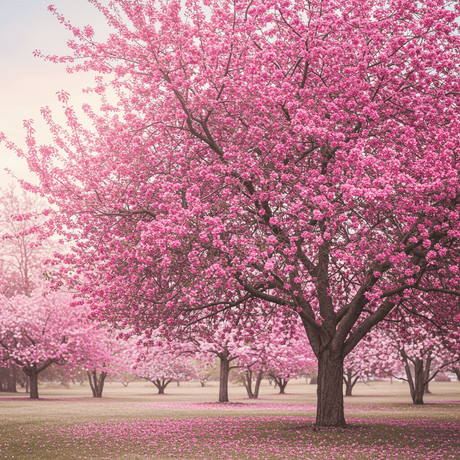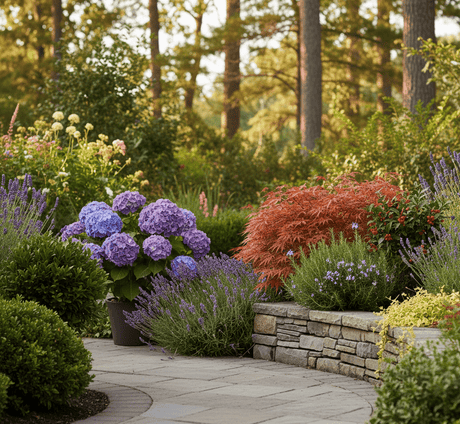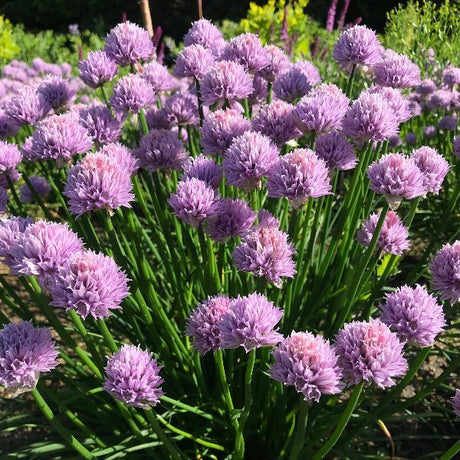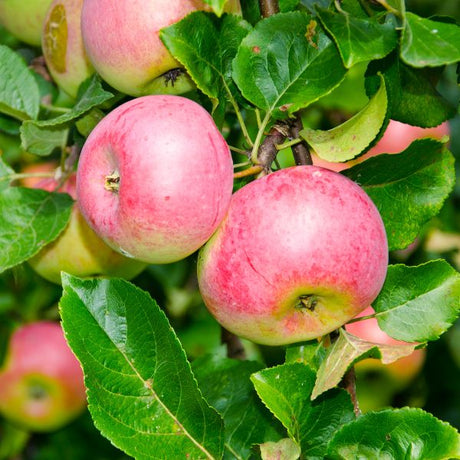Tulare Cherry Tree
Prunus avium 'Tulare'
Plant Sentry™
Plant Sentry™

Plant Sentry™ Protected
Your order is protected by our compliance system that:
- Prevents restricted plants from shipping to your state
- Ensures plants meet your state's agricultural requirements
- Protects gardens from invasive pests and diseases
Delivery and Shipping
Delivery and Shipping
Delivery and Shipping
Fast, Safe Plant Delivery
Ships in 3-4 business days • Tracking provided • Weather protected
| Under $50 | $9.99 |
| $50 - $99.99 | $14.99 |
| $100 - $149.99 | $16.99 |
| $150 - $198.99 | $24.99 |
| $199+ | FREE |
✓ Zone-specific timing • ✓ Professional packaging • ✓ Health guarantee
Understanding Plant Options
Nature Hills offers plants in two main formats:
- Container Plants: Grown in pots with soil, sized by container volume and plant age
- Bare Root Plants: Dormant plants without soil, sized by height measurements
Container Plant Sizes
Container sizes indicate plant age and growing capacity rather than liquid volume equivalents. Our containers follow industry-standard nursery "trade gallon" specifications, which differ from standard liquid gallon measurements.
Young Plants (6 months to 18 months old)
| Container Size | Actual Volume | Metric Equivalent |
|---|---|---|
| 2" x 2" x 3" | 0.18 - 0.21 dry quarts | 0.20 - 0.23 dry liters |
| 4" Container | 0.31 - 0.87 dry quarts | 0.35 - 0.96 dry liters |
| 4.5" Container | 0.65 dry quarts | 0.72 dry liters |
| 6" Container | 1.4 dry quarts | 1.59 dry liters |
| 1 Quart | 1 dry quart | 1.1 dry liters |
| 5.5" Container | 1.89 dry quarts | 2.08 dry liters |
Established Plants (18 months to 2.5 years old)
| Container Size | Actual Volume | Metric Equivalent |
|---|---|---|
| 2 Quart | 2 dry quarts | 2.2 dry liters |
| #1 Container | 2.26 - 3.73 dry quarts | 2.49 - 4.11 dry liters |
| 5" x 5" x 12" | 3.5 - 4.3 dry quarts | 3.85 - 4.74 dry liters |
Mature Plants (2-4 years old)
| Container Size | Actual Volume | Metric Equivalent |
|---|---|---|
| #2 Container | 1.19 - 1.76 dry gallons | 5.24 - 7.75 dry liters |
| #3 Container | 2.15 - 2.76 dry gallons | 8.14 - 12.16 dry liters |
Large Plants (3-5 years old)
| Container Size | Actual Volume | Metric Equivalent |
|---|---|---|
| #5 Container | 2.92 - 4.62 dry gallons | 12.86 - 20.35 dry liters |
| #6 Container | 5.25 - 6.01 dry gallons | 23.12 - 26.42 dry liters |
| #7 Container | 5.98 - 6.53 dry gallons | 26.34 - 28.76 dry liters |
Bare Root Plants
Bare root plants are sold by height from the root system to the top of the plant. Plants may exceed minimum height requirements.
Common Sizes:
- Trees: 1 foot, 2 feet, 3 feet, 4 feet, 5 feet, 6 feet
- Shrubs & Perennials: 1 foot, 18 inches, 2 feet
Important Notes
Container Volume Specifications
- Trade Gallon Standard: Our containers follow industry-standard "trade gallon" specifications established by the American National Standards Institute (ANSI Z60.1) for nursery stock
- Volume Variations: Actual soil volume may vary due to plant root systems and growing medium settlement
- Age Indicators: Container size primarily indicates plant age and maturity rather than liquid volume equivalents
Growing Conditions
- Plant size can vary based on variety and growing conditions
- Container size helps indicate plant maturity and establishment level
- Larger containers generally mean more established root systems and faster landscape establishment
Seasonal Availability
- Bare root plants are available seasonally when dormant
- Container plants are available throughout the growing season
- Specific varieties may have limited availability in certain sizes
Questions?
For questions about specific plant sizes or availability, please contact our plant experts who can help you choose the right size for your landscape needs.

Plant Sentry™ Protected
Your order is protected by our compliance system that:
- Prevents restricted plants from shipping to your state
- Ensures plants meet your state's agricultural requirements
- Protects gardens from invasive pests and diseases
Plant Profile & Growing Essentials
Cold hardy, Edible, Flowering, Ornamental Berries/Fruit, Attracts pollinators, Thornless, Disease resistant, and Self-pollinating
Specifications
Specifications
-
Botanical Name
-
Height
-
Width
-
Growing Zones
-
Sunlight
-
Growth RateModerate
-
Flower Color
-
Leaf Color
-
Pollinator FriendlyYes
-
Pollinator Required
-
Bloom PeriodEarly Spring
-
Harvest Time
-
FragrantYes
-
Does Not Ship ToAK, AZ, CA, CO, HI, ID, MS, MT, NV, OR, UT, WA
Planting & Care Instructions
Planting & Care Instructions
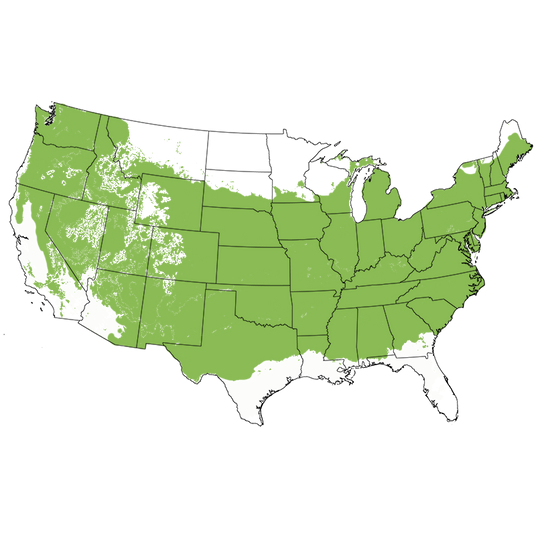
Growing Zones 5-8
Tulare Cherry Tree: Early-Ripening, Sweet Red Delight!
The Tulare Cherry Tree (Prunus avium 'Tulare') is a dazzling early-season producer of richly sweet, ruby-red Cherries that rival the fan-favorite Bing in flavor—but ripen earlier than them! This makes Tulare a prized pick for gardeners who want to enjoy fresh fruit a bit sooner in the season! In late spring to early summer, clusters of plump Cherries ripen to a deep garnet-red.
A self-fruitful variety, Tulare doesn't need a pollinator to set fruit, but pairing it with another sweet Cherry like Bing or Lapins can really boost your harvest. Tulare Cherries are firm, glossy, and deeply flavorful with just the right balance of sugar and acidity—perfect for eating fresh, baking, or preserving. It also boasts good resistance to cracking and diseases that can plague other Cherry types, making it a dependable performer in the home orchard.
This medium-sized, deciduous fruit tree has a rounded, upright habit and reaches about 10-20 feet tall and 10-15 feet wide. In early spring, it bursts into clouds of scented white blossoms that buzz with pollinators. Glossy green foliage fills in after the bloom, casting dappled shade before turning golden in fall, giving you a little seasonal pizzazz!
Key Features
- Early-season sweet Cherry ripens before Bing
- Large, firm, deep red fruit with superb flavor
- Self-pollinating but produces better with another Cherry nearby
- Gorgeous white spring blooms and golden fall foliage
- Good resistance to cracking and disease
- Great for fresh eating, baking, canning, and drying
- Cold-hardy in USDA Zones 5–8
Landscaping Uses
Use the Tulare Cherry Tree as a productive centerpiece in your home orchard or edible landscape. It reaches about 20 feet tall with a slightly smaller spread.
- Anchor tree for a fruit tree orchard or fruiting hedgerow
- Specimen tree in a lawn or garden
- Part of an edible landscaping plan
- Pair with other Cherries for cross-pollination and beauty
- Wildlife-friendly planting for pollinators and birds (who will love the fruit, too!)
Care and Maintenance
Tulare is named after the Tulare region in California's Central Valley, where it was bred for flavor, firmness, and early ripening. It's well-suited to Zones 5 through 8, thriving in regions with cold winters and mild summers. It needs roughly chill hours 700–900, making it a perfect match for climates with a true winter dormancy. Tulare is a deciduous fruit tree known for its toughness, cold-hardiness, and reliably sweet fruit.
- Planting Time: Best planted in early spring or fall. Read planting info here!
- Sun Needs: Full sun (6+ hours of direct light daily)
- Soil Needs: Prefers well-drained loam; does not tolerate soggy soil; avoid heavy clay unless amended
- Moisture Needs: Moderate and regular moisture; water regularly, especially during fruit development
- Mulch: Apply a 3–4 inch layer of mulch around the root zone to conserve moisture and suppress weeds
- Fertilization Needs: Feed in early spring with a balanced fertilizer formulated for fruit trees
- Cherry Pruning Info: Prune in late winter to early spring; remove crossing branches and maintain an open center for airflow
- Renewal Pruning: Not typically needed but can be done to rejuvenate older trees
- Special Perks/Growing Tips:
- Resistant to fruit cracking
- Thin fruit to increase size and flavor
- Deer may browse young trees—protect when young
- Chill Hours: Requires approximately 700–900 chill hours
- Pollination Needs: Self-pollinating - but produces heavier crops with another sweet Cherry nearby, like Brooks or Glenare.
Why Tulare is the Cherry on Top
If you're craving sweet Cherries weeks before everyone else's Bing Cherries ripen, the Tulare Cherry Tree is your garden's golden ticket. Early, juicy, and low-fuss, it's a must-have for fresh fruit lovers who don't want to wait around for dessert. With its beautiful blooms, tasty fruit, and manageable size, it's a productive performer with ornamental charm.
Buy now, and Nature Hills will ship this fantastic Sweet Cherry Tree variety to your doorstep!
Frequently Asked Questions
Is the Tulare Cherry Tree self-pollinating?
Yes, it is self-fruitful, but it will produce more fruit when planted near another sweet Cherry like Bing or Lapins.
When does the Tulare Cherry Tree bear fruit?
Tulare ripens in late spring to early summer—about a week or two before Bing.
What are the chill hour requirements for Tulare?
It requires about 700–900 chill hours, making it ideal for areas with cold winters.
Does Tulare Cherry Tree resist fruit cracking?
Yes! One of its best features is its resistance to cracking, even in wet conditions.
Can I grow a Tulare Cherry in a container?
Not recommended for container growing long-term due to its size, but it can be grown in large pots for a few years with proper pruning.
How big does the Tulare Cherry Tree get?
It typically grows 10-20 feet tall and 10-15 feet wide, depending on pruning.
Do I need to thin Tulare Cherries?
Yes—thinning the fruit can lead to larger, sweeter Cherries and help prevent branch breakage.

